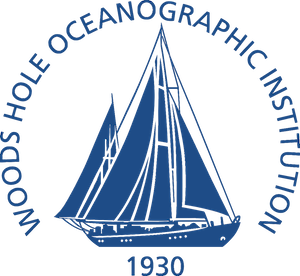Woods Hole Oceanographic Institution
Woods Hole Oceanographic Institution (WHOI) is a private, non-profit oceanography research and higher education facility located in Woods Hole, Massachusetts, United States. It is considered one of the world's leading institutions for oceanographic research, engineering, and higher education. WHOI's primary mission is to understand the ocean and its interaction with the Earth as a whole, and to communicate a basic understanding of the ocean's role in the changing global environment.
History[edit | edit source]
The Woods Hole Oceanographic Institution was founded in 1930, following a recommendation from the National Academy of Sciences to establish a dedicated facility for oceanographic research. Since its inception, WHOI has grown into one of the most respected and highly regarded research institutions in the field of oceanography. It has been involved in numerous groundbreaking studies and has contributed significantly to our understanding of the ocean and its ecosystems.
Research[edit | edit source]
WHOI conducts research across a broad spectrum of ocean science disciplines including marine biology, marine chemistry, geology and geophysics, ocean circulation, and climate change. The institution operates a fleet of research vessels and vehicles, including the famous Alvin, a deep-sea submersible that has been used in numerous scientific explorations and discoveries.
Facilities[edit | edit source]
The institution's main campus is located in Woods Hole, Massachusetts, and includes state-of-the-art laboratories, research facilities, and a fleet of research vessels. WHOI also operates several other facilities, including a coastal research vessel, the R/V Tioga, and the Deep Submergence Laboratory, which designs and operates underwater vehicles for deep ocean exploration.
Education[edit | edit source]
In addition to its research mission, WHOI is committed to education and training the next generation of ocean scientists and engineers. The institution offers graduate education in partnership with the Massachusetts Institute of Technology (MIT) through the MIT-WHOI Joint Program in Oceanography/Applied Ocean Science and Engineering. This program provides students with a unique opportunity to engage in hands-on research and gain interdisciplinary knowledge in the field of oceanography.
Notable Achievements[edit | edit source]
WHOI has been involved in many significant oceanographic discoveries and developments. One of its most notable achievements was the discovery of the Titanic wreck in 1985, in collaboration with French oceanographer Robert Ballard. WHOI scientists and engineers have also been instrumental in studying the Deepwater Horizon oil spill, developing autonomous underwater vehicles (AUVs) like the REMUS, and conducting critical research on global climate change and its impact on the ocean.
Conclusion[edit | edit source]
The Woods Hole Oceanographic Institution continues to be at the forefront of oceanographic research and education. Through its comprehensive research programs, state-of-the-art facilities, and commitment to education, WHOI plays a crucial role in advancing our understanding of the ocean and addressing some of the most pressing environmental challenges facing the world today.
Navigation: Wellness - Encyclopedia - Health topics - Disease Index - Drugs - World Directory - Gray's Anatomy - Keto diet - Recipes
Search WikiMD
Ad.Tired of being Overweight? Try W8MD's physician weight loss program.
Semaglutide (Ozempic / Wegovy and Tirzepatide (Mounjaro) available.
Advertise on WikiMD
WikiMD is not a substitute for professional medical advice. See full disclaimer.
Credits:Most images are courtesy of Wikimedia commons, and templates Wikipedia, licensed under CC BY SA or similar.
Contributors: Prab R. Tumpati, MD





